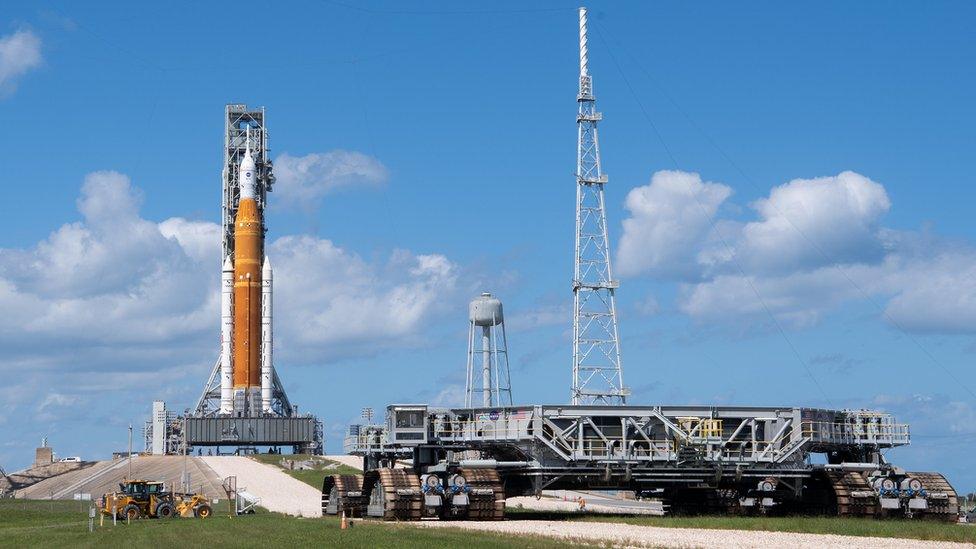Hurricane Ian forces Nasa to shelter Artemis Moon rocket
- Published

The Crawler Transporter will take the SLS rocket back to its assembly building
The American space agency is to pull its Artemis-I Moon rocket off the launch pad in Florida because of an approaching hurricane.
Nasa says the Space Launch System (SLS) vehicle will be rolled back into its engineering workshop to protect it.
Hurricane Ian is moving through the Gulf of Mexico and is expected to make landfall in Florida on Thursday.
High winds and heavy rain are forecast for the Kennedy Space Center.
Although the spaceport will probably escape the worst of the storm's impacts, Nasa can't risk its multi-billion-dollar rocket being damaged.
The return to Kennedy's famous Vehicle Assembly Building (VAB) will now delay the maiden flight of the SLS to late October at the earliest and possibly even to the second half of November.
Nasa had hoped the storm's track through the Gulf would take it sufficiently westwards so that the rocket could stay out on the pad, enabling a lift-off to take place sooner.
But the medium-range forecast models have, in recent hours, seen the expected track shift eastwards, putting the west coast of Florida, or its panhandle, directly in the firing line.
Florida Governor Ron DeSantis has already declared a "state of emergency".
Nasa has one of its giant tractors on standby at the pad, ready to initiate the roll-back.
The slow speed at which this Crawler Transporter moves means the 6.7km (4.2 miles) journey to the VAB takes the best part of half a day. Engineers will therefore want to get it under way as soon as possible.
The retreat is expected to begin at 04:00 BST (23:00 EDT).
Artemis-I is the first in a series of missions that will eventually see humans return to the lunar surface after an absence of 50 years.
The initial flight of the SLS is uncrewed: it's billed as a safety demonstration of the hardware and will send a capsule called Orion out to and beyond the Moon before coming home to a splashdown in the Pacific Ocean.
Assuming everything works as it should, astronauts will then climb aboard the next scheduled SLS-Orion outing in 2024. This again will do a simple loop around the Moon.
It's on Artemis-III, possibly in late 2025, that astronauts will make the trip down to the lunar surface.